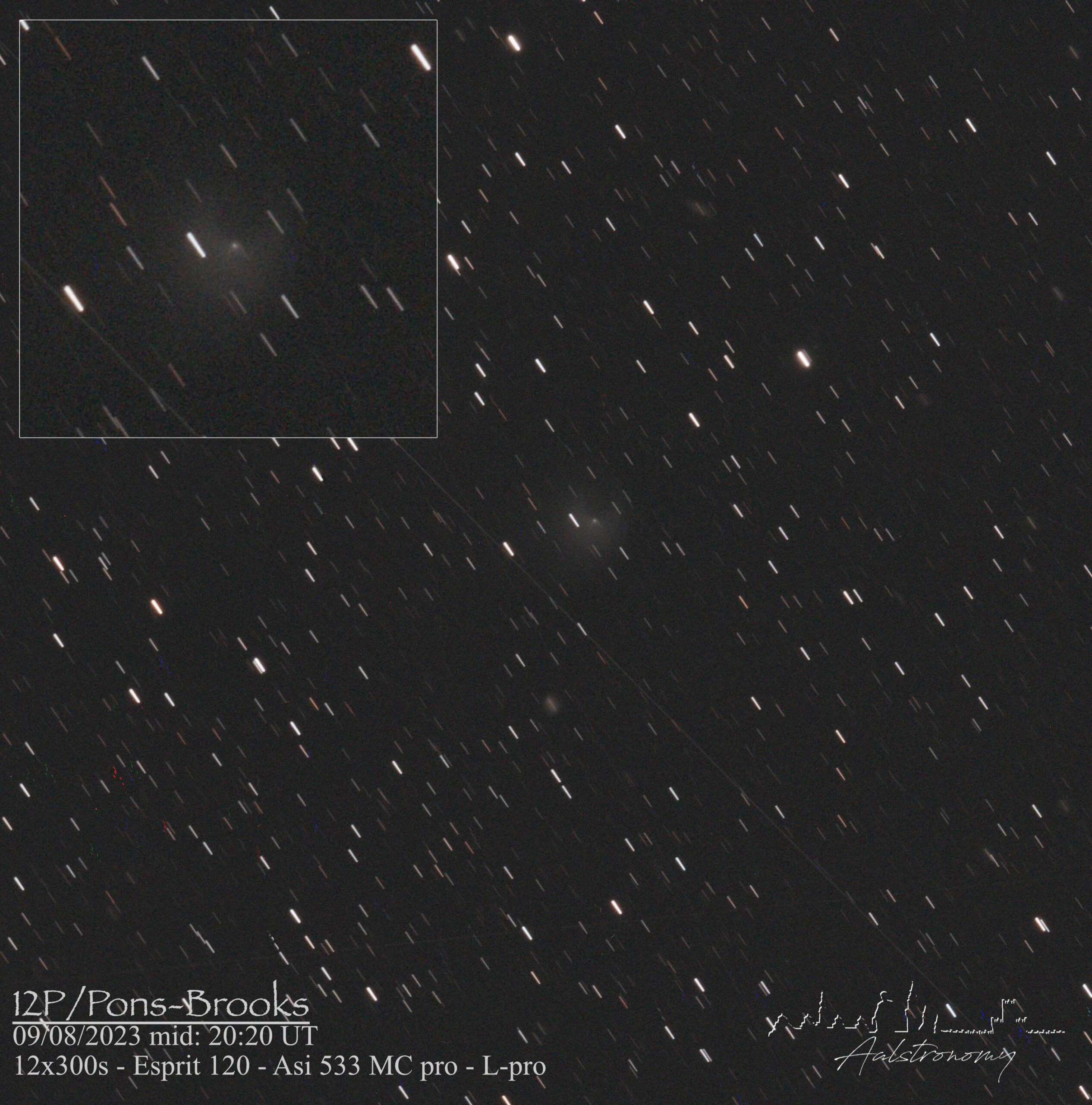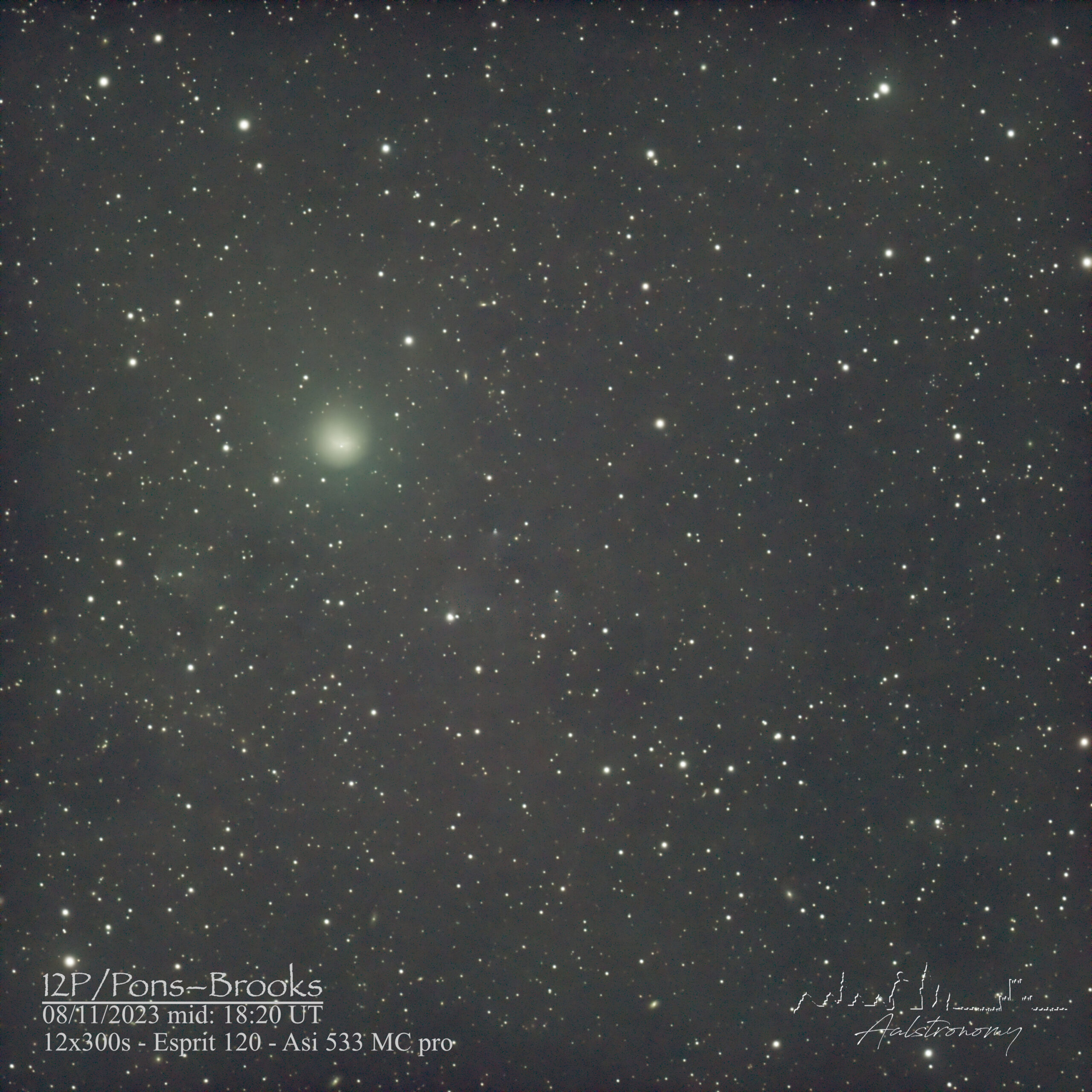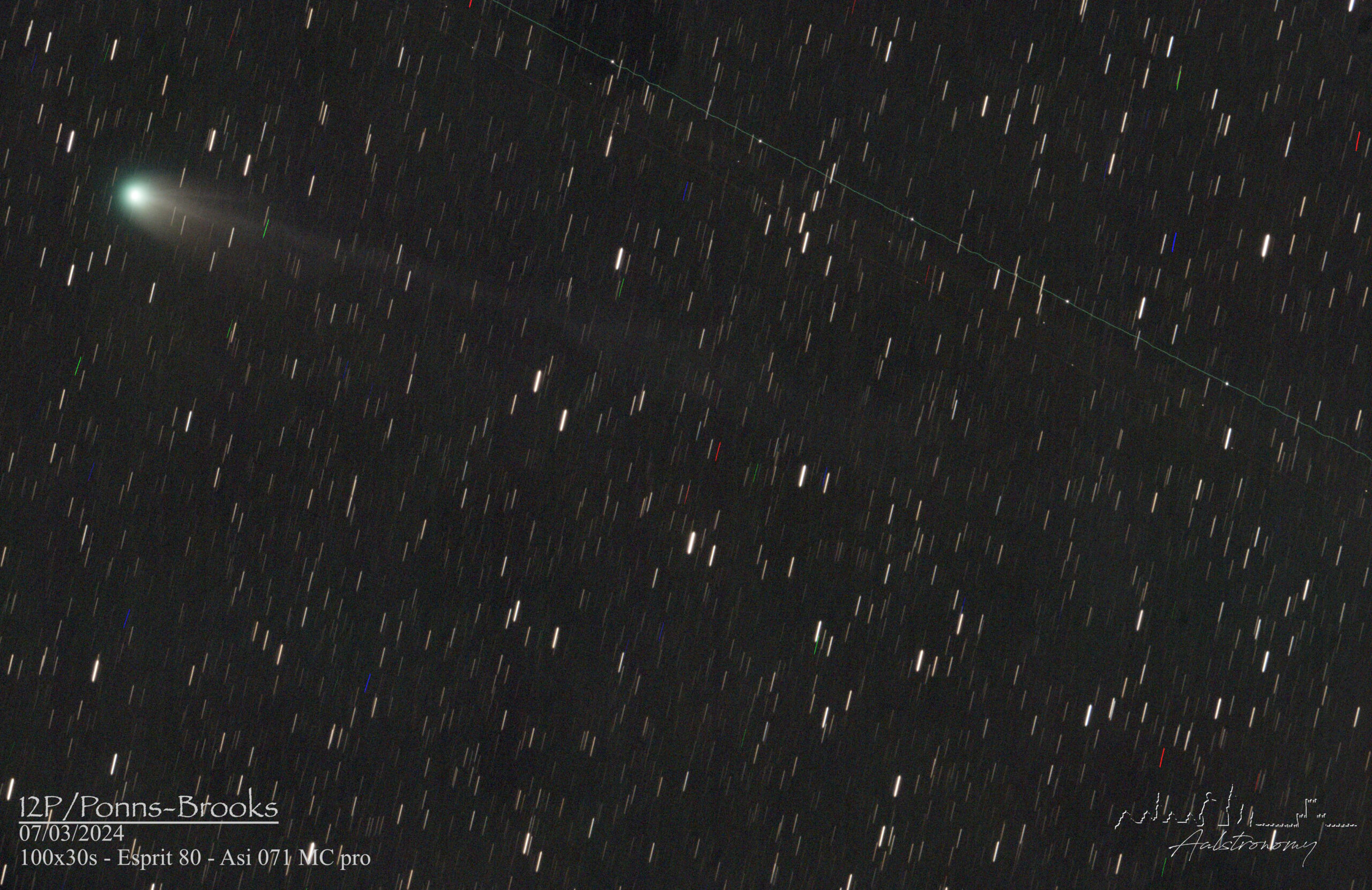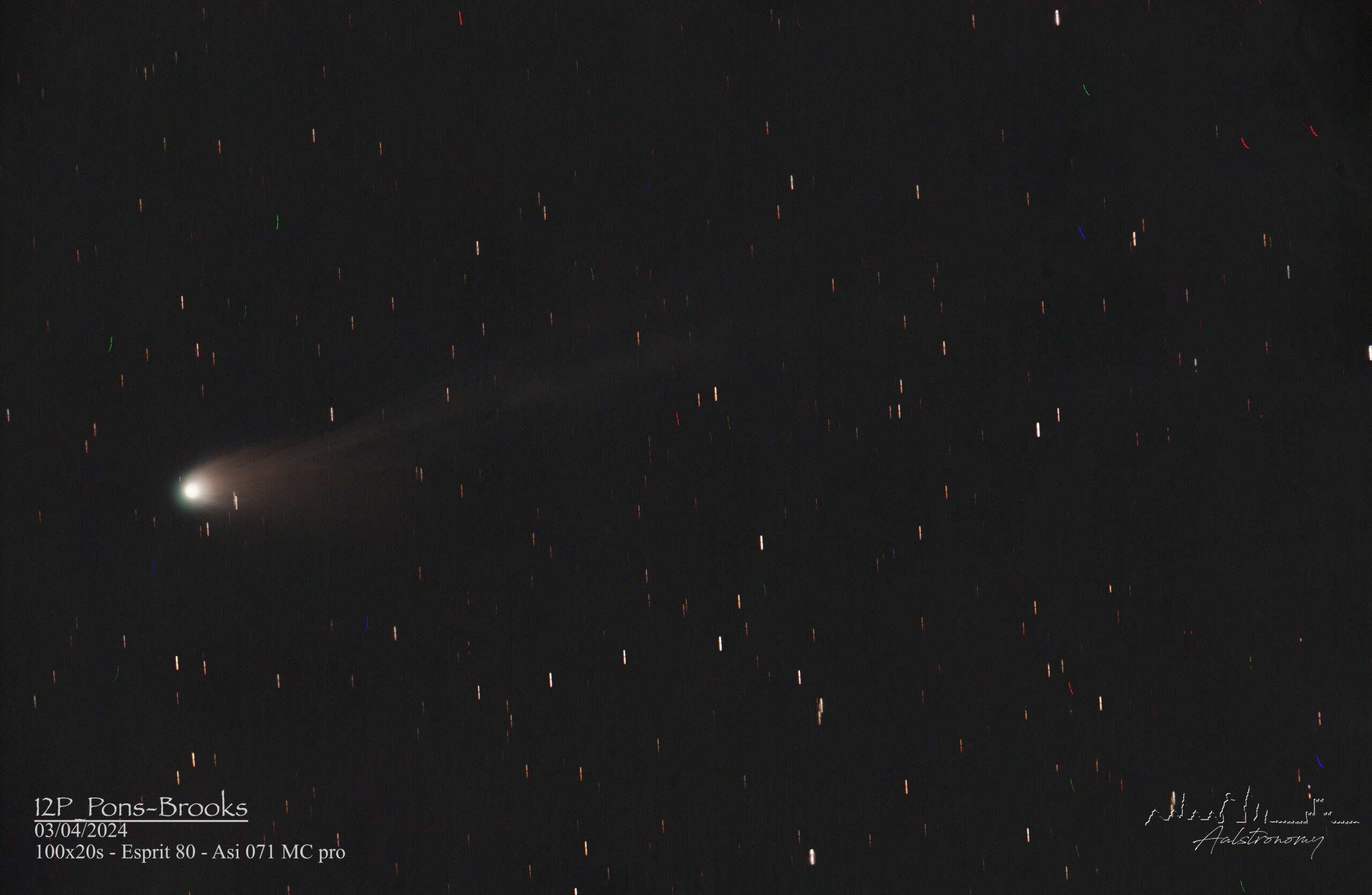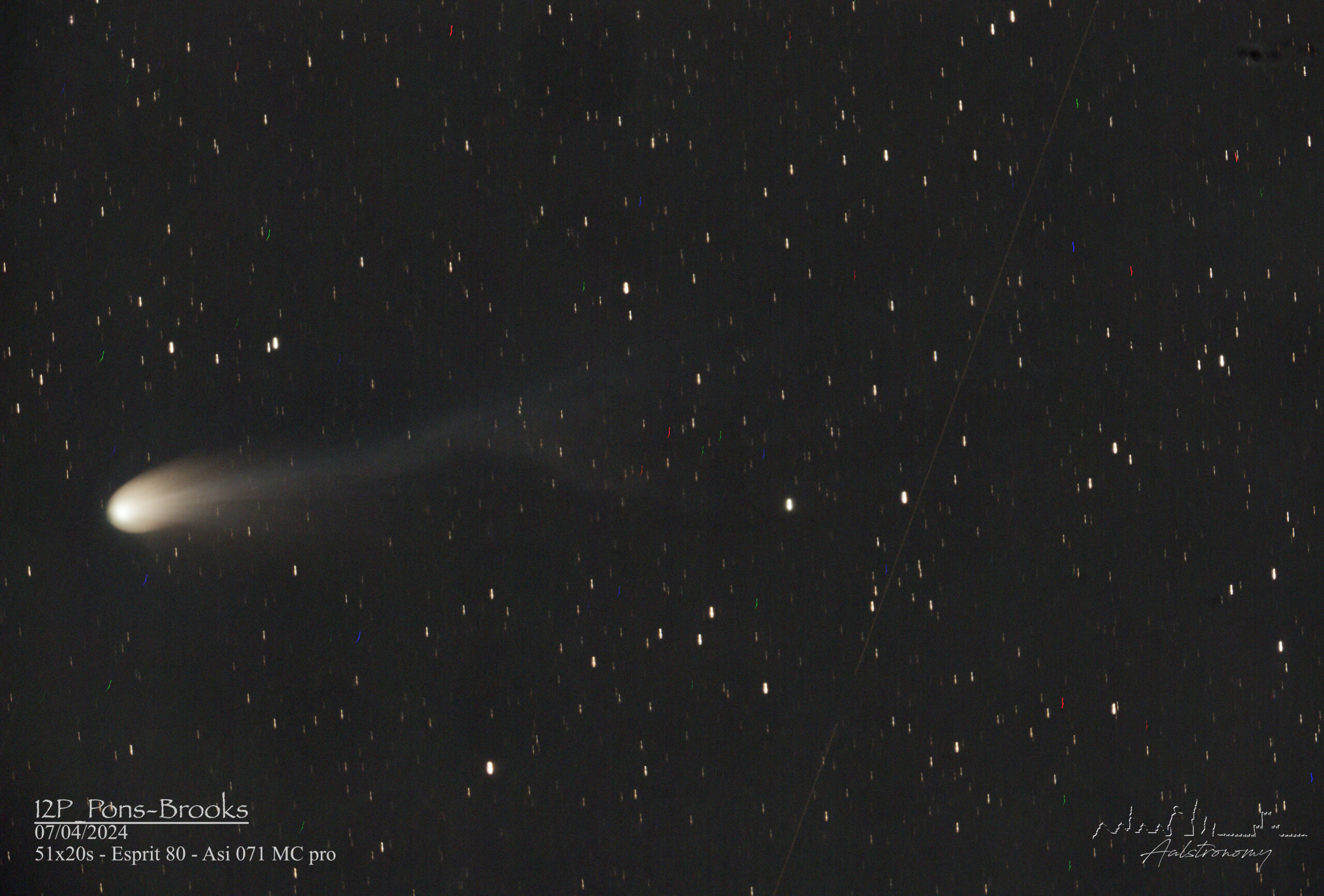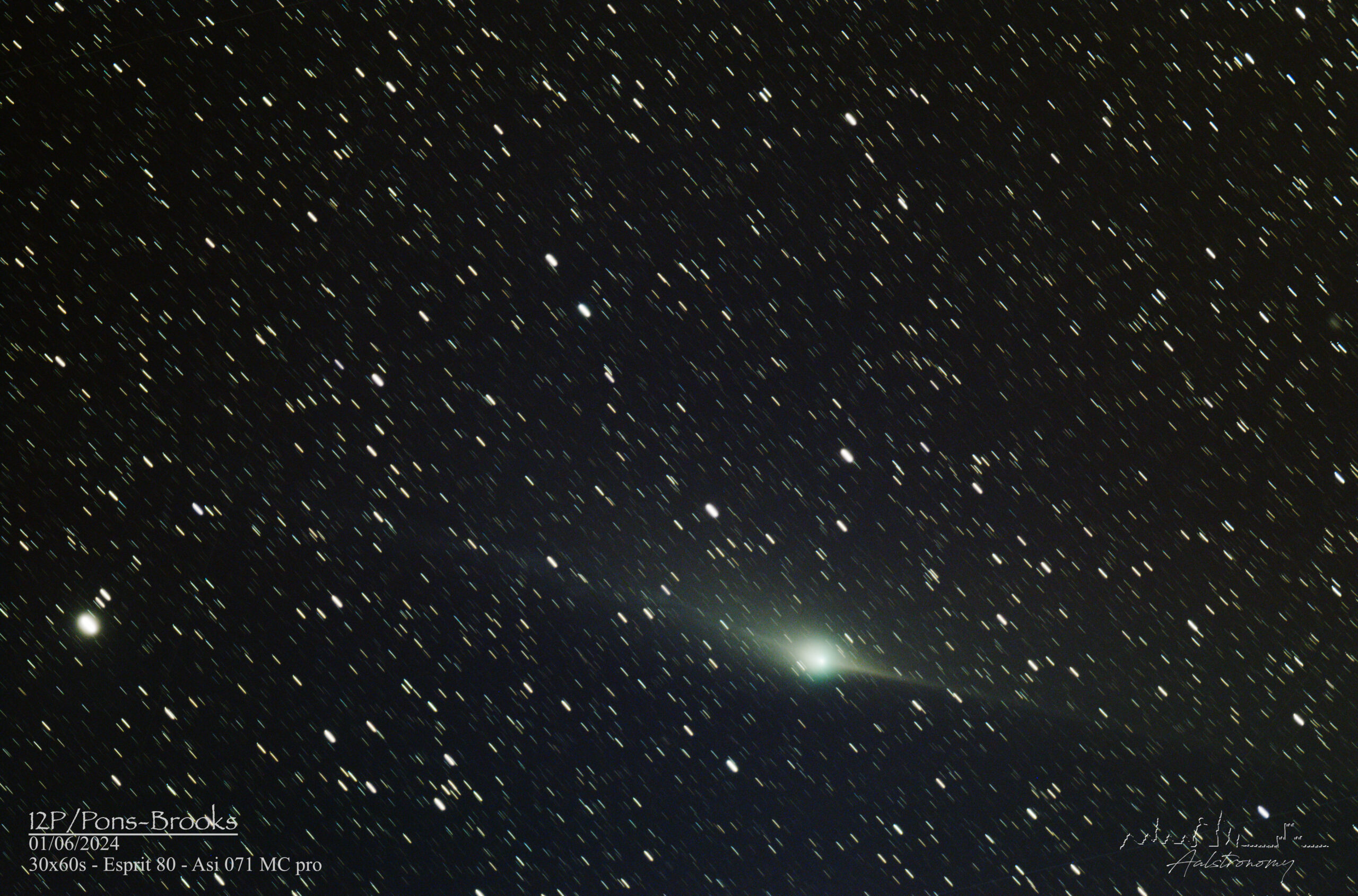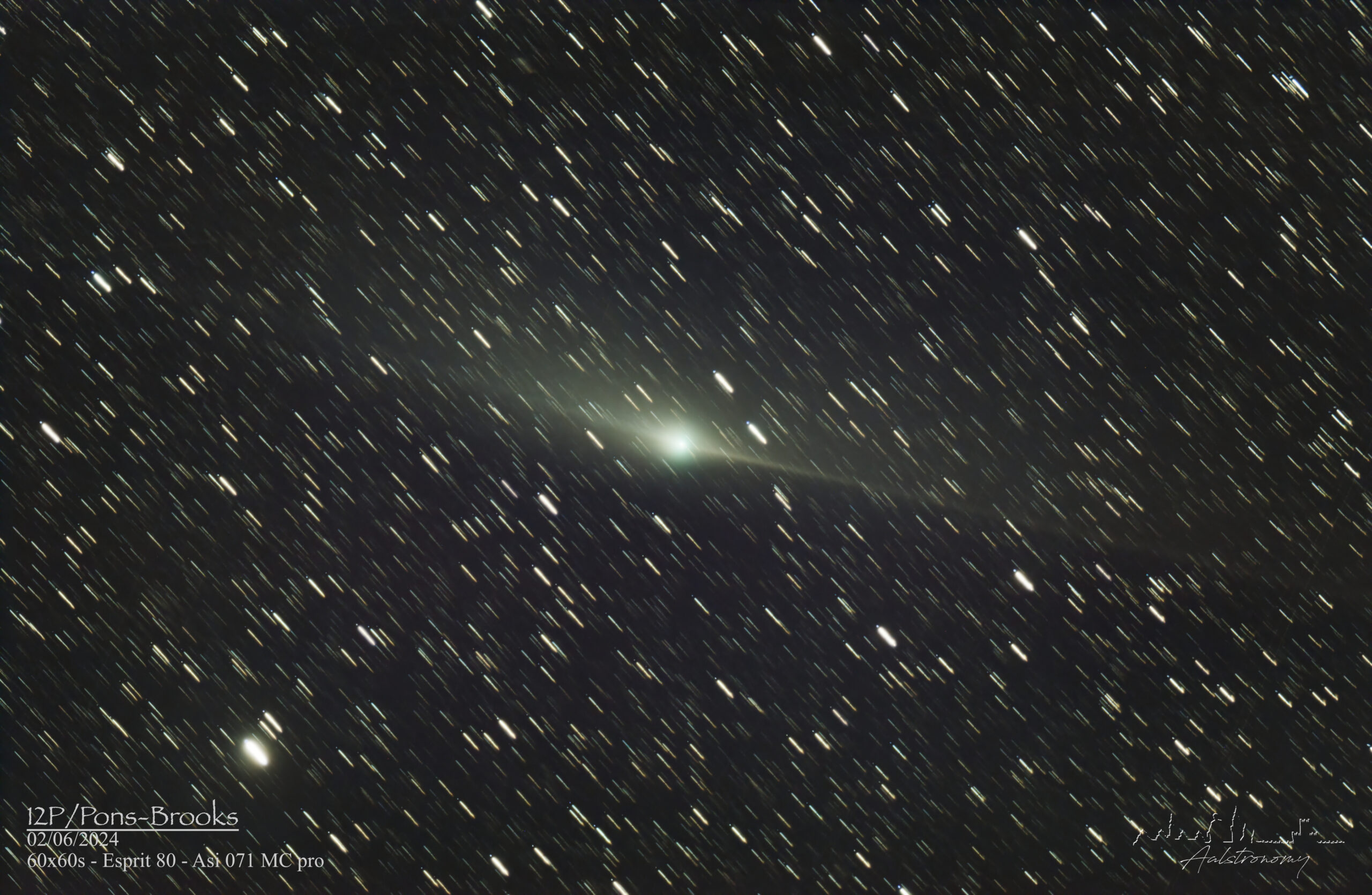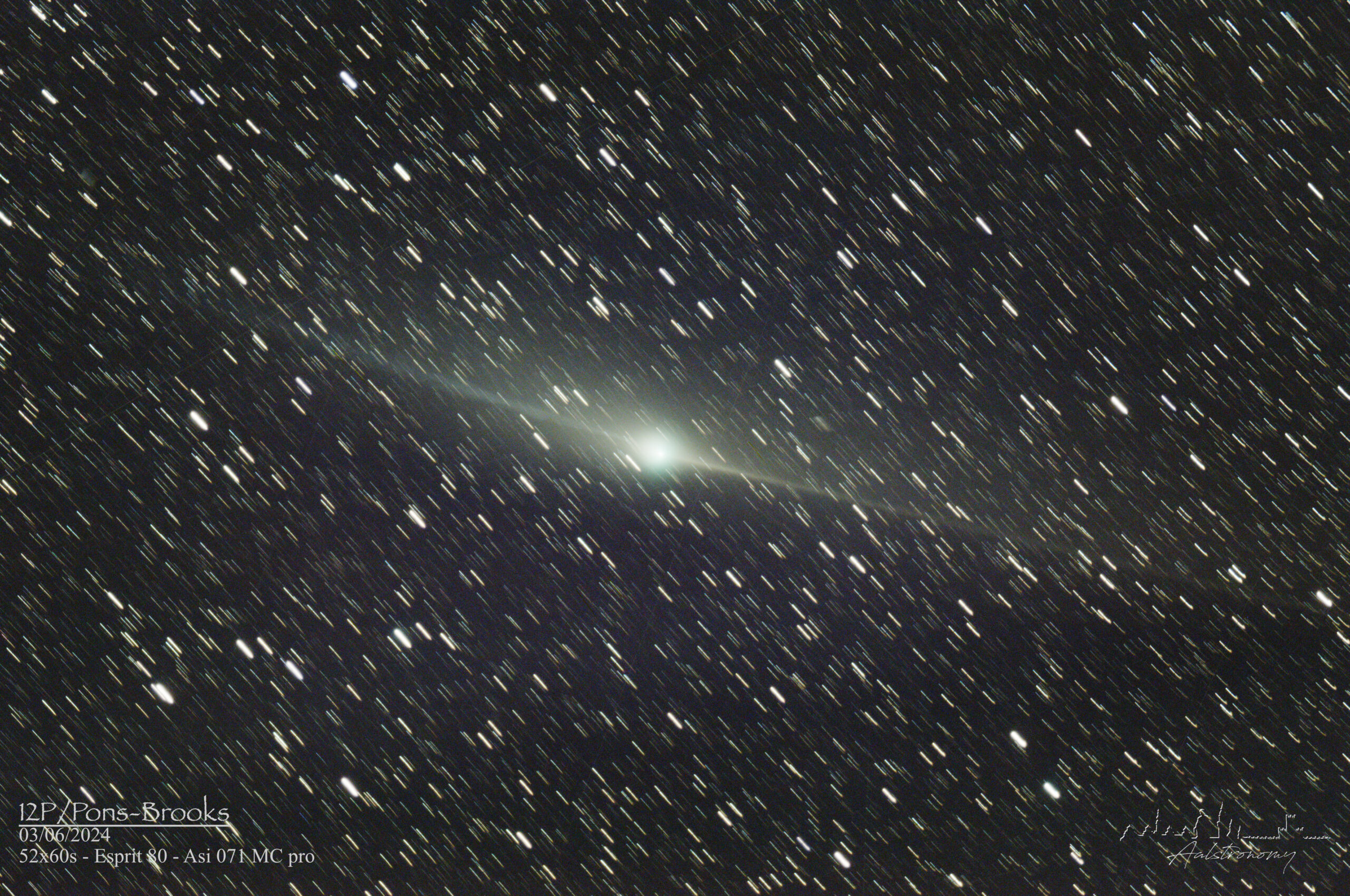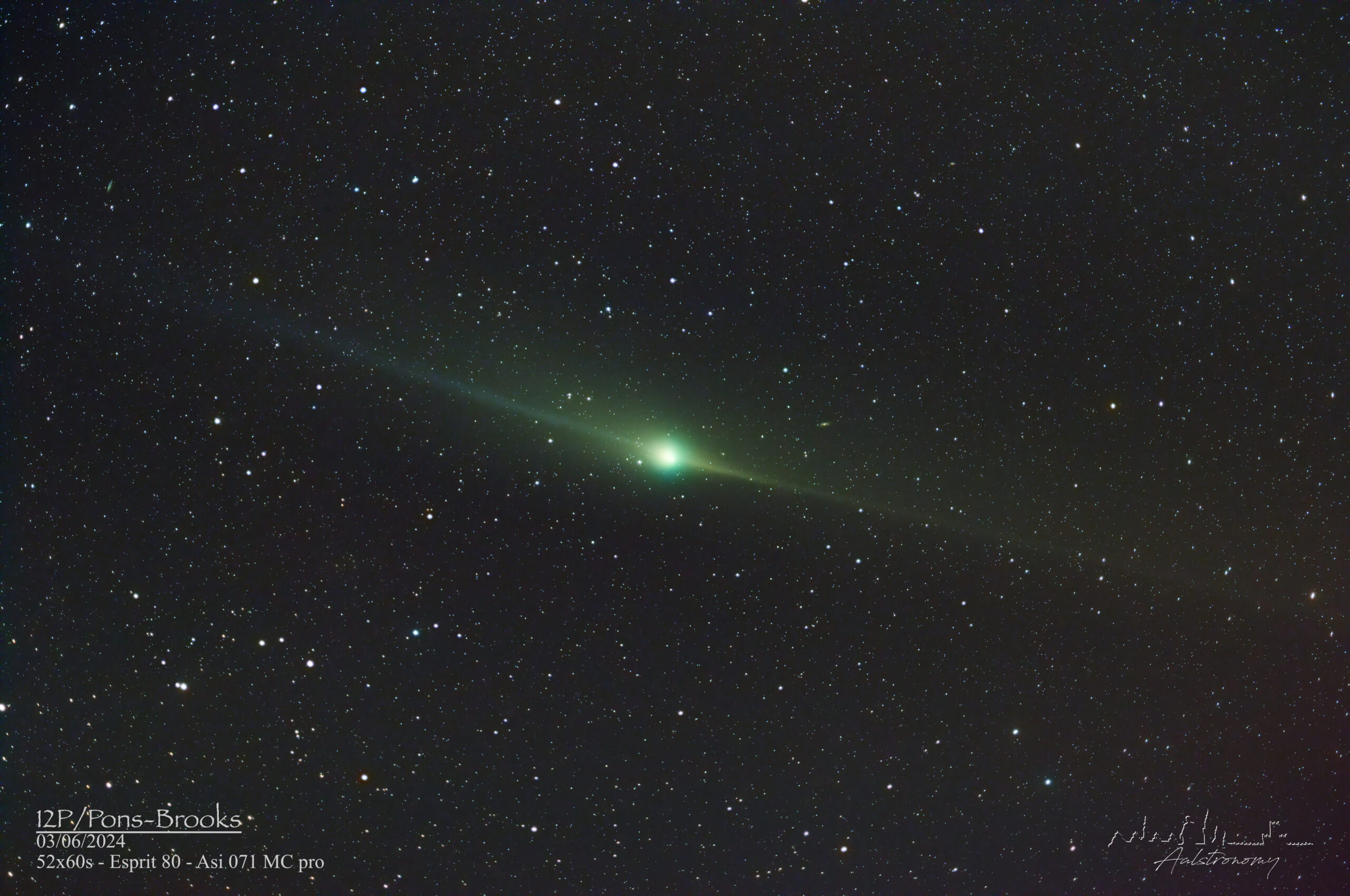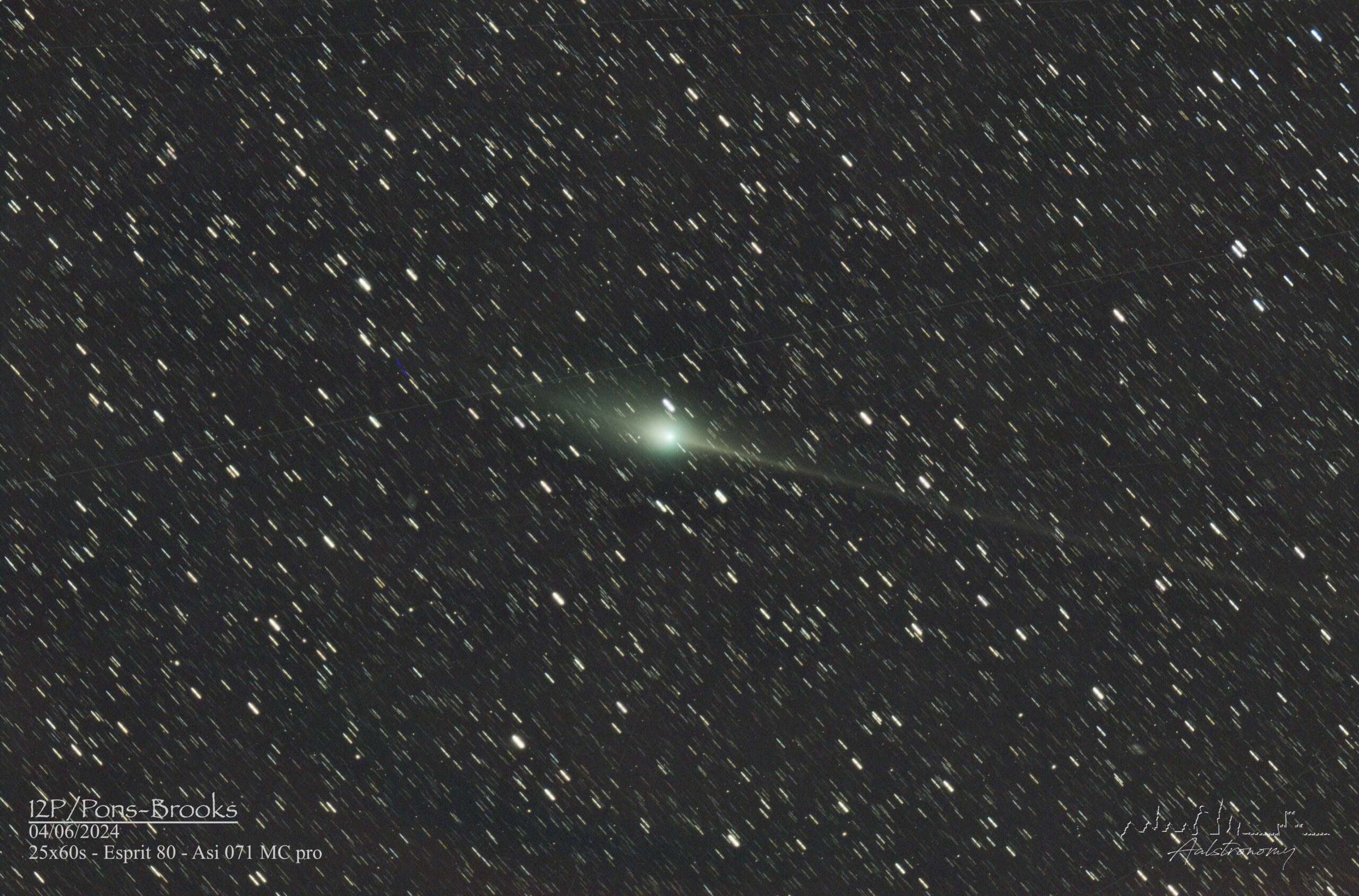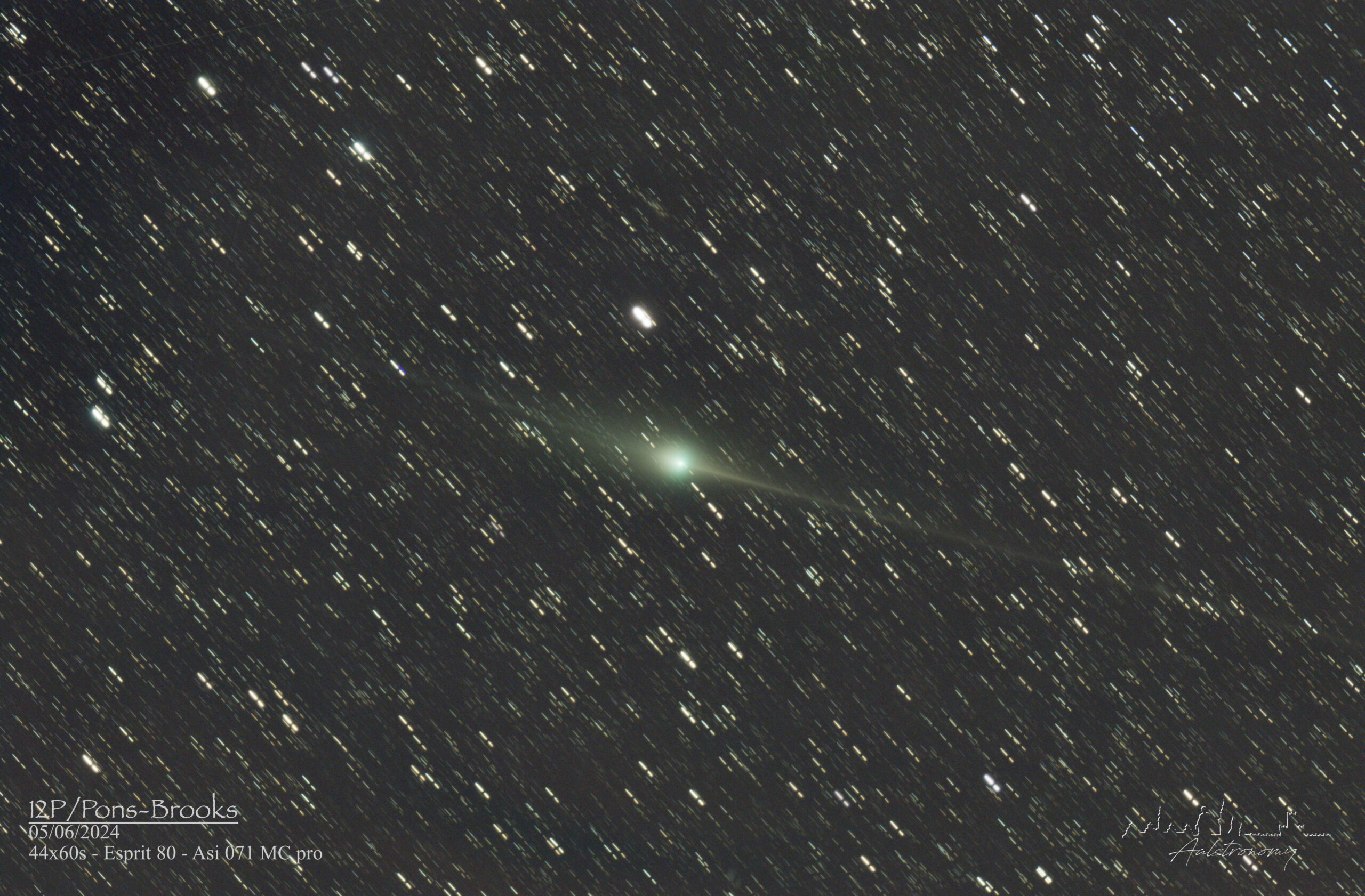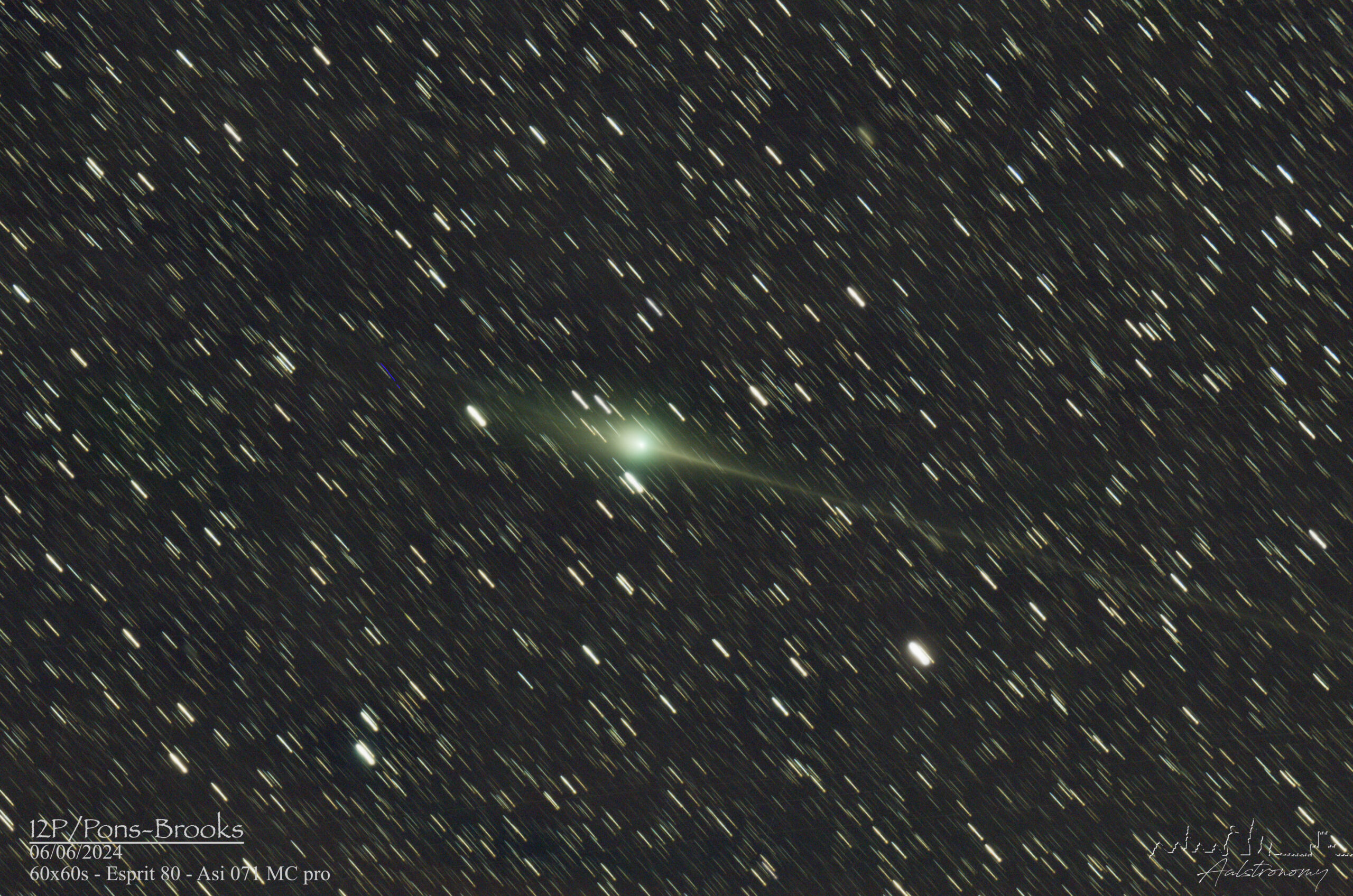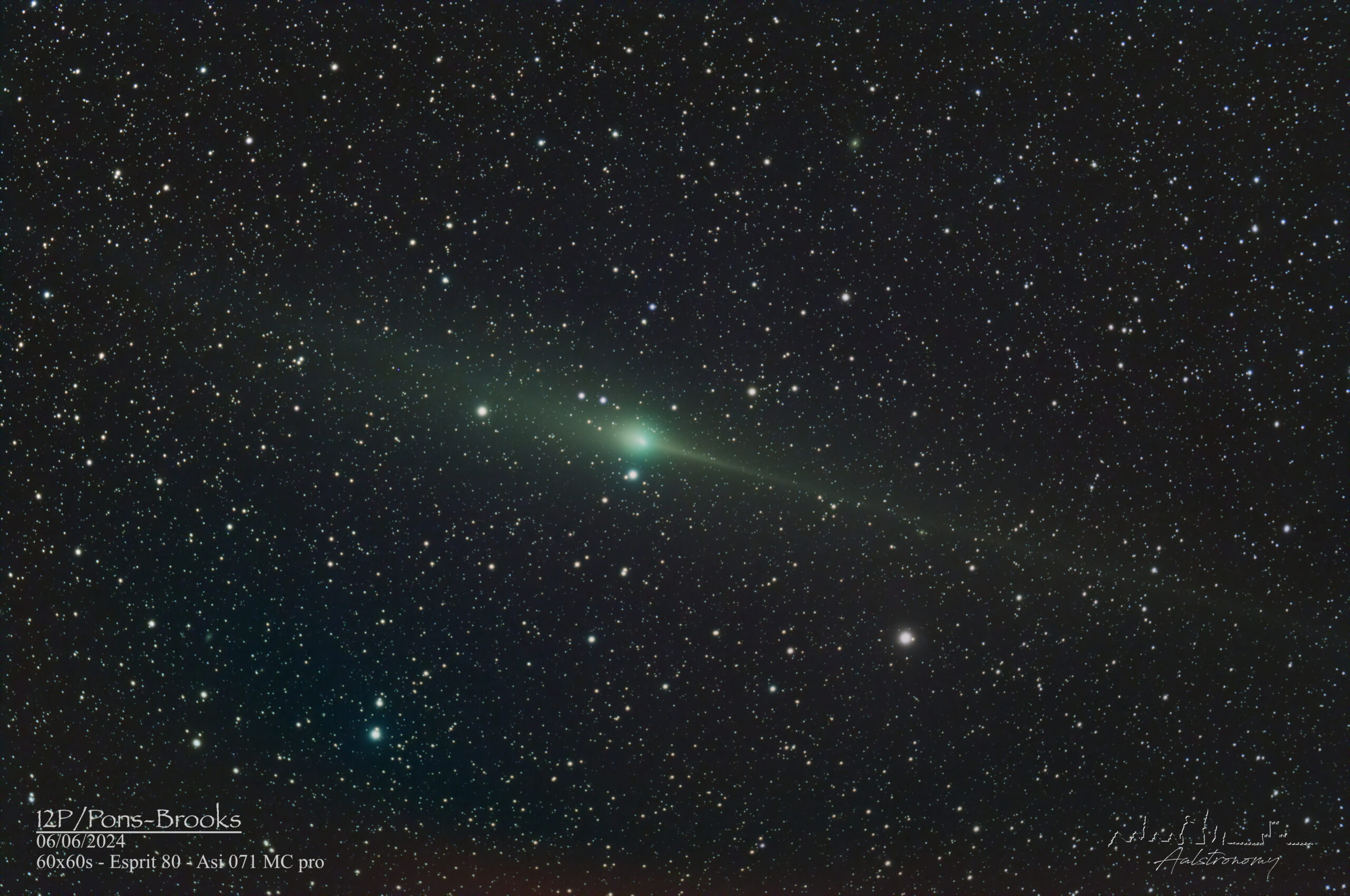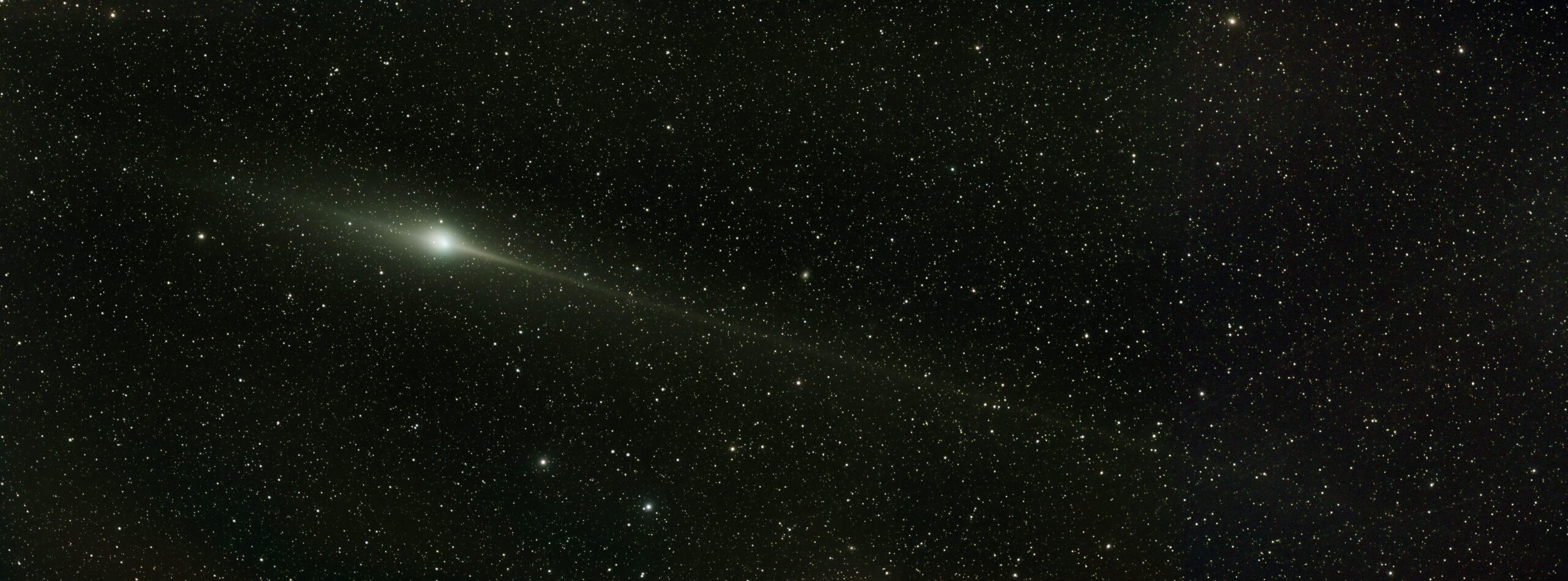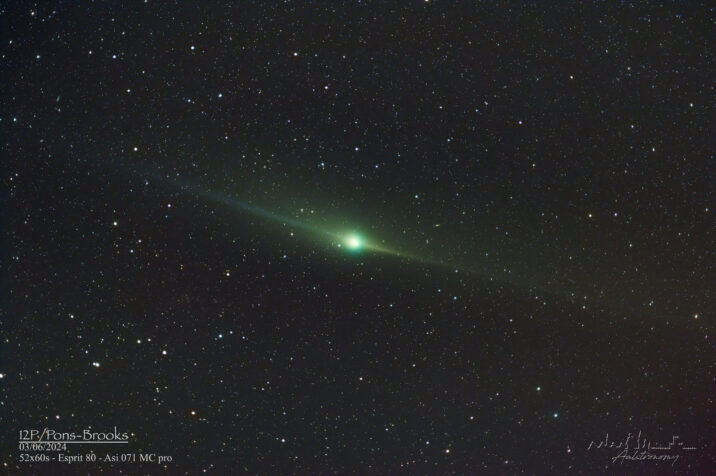
Comet 12P/Pons-Brooks, a captivating interplanetary traveler, embarks on a mesmerizing journey through the solar system. This icy wanderer follows an elliptical orbit around the Sun, occasionally gracing Earth’s skies with its ethereal presence.
Comets like 12P/Pons-Brooks are composed of a mixture of ice, dust, and volatile gases. As they approach the Sun, the Sun’s heat causes the icy material to vaporize, creating a glowing coma—a hazy envelope surrounding the comet’s nucleus. The solar wind then pushes the released material away from the Sun, forming the comet’s characteristic tail that points away from the star. A week before this image, the comet has experienced an outburst, brightening its appearance by 100 x.
Discovered by Jean Louis Pons and William Robert Brooks in the 19th century, Comet 12P/Pons-Brooks has become a recurring visitor in our cosmic neighborhood. Its orbit brings it relatively close to the Sun, allowing us to witness its stunning transformation from a distant point of light to a luminous spectacle in the night sky.
As the comet nears its perihelion—the point in its orbit closest to the Sun—the heating process intensifies. The ices on its surface rapidly transition from solid to gas, releasing dust and creating a glowing coma. This glowing cloud, combined with the pressure of the solar wind, gives birth to the comet’s awe-inspiring tail that can stretch across the sky.
Comet 12P/Pons-Brooks completes its journey around the Sun in a period of approximately 70.7 years.
This is a photographic documentation of its most recent approach:
3 months later, the comet has grown noticeably brighter. Its appearance has not changed a lot: there are still 2 “devils horns” visible, no tail, and the overall appearance is round.
March 2024: The comet is approaching the sun and putting up quite a show. Unfortunately, weather has been terrible, only a small break in the clouds made it possible to have a quick look. Ofcourse, the comet is low on the horizon and lightpollution makes it hard to get decent images.
April 2024: I am on a trip to Texas, to see the eclipse, and was able to catch the comet again.
In june 2024 I was in Namibia for some stzargazing, and cound catch the comet again, just after sunset.
A very spectacular antitail was visible!
I decided to image the comet every night, to show the changes in the tail.
Day 3, there is an offset between the tails and the dust tail is showing some structure now!
on 06/06 Earth crossed th Orbital plane of the comet. This resulted in a very sharp antitail:
On the final night I made a mosaic to show the extent of the antitail:
